EMAIL MARKETING
How to Boost Your Cold Email Response Rate
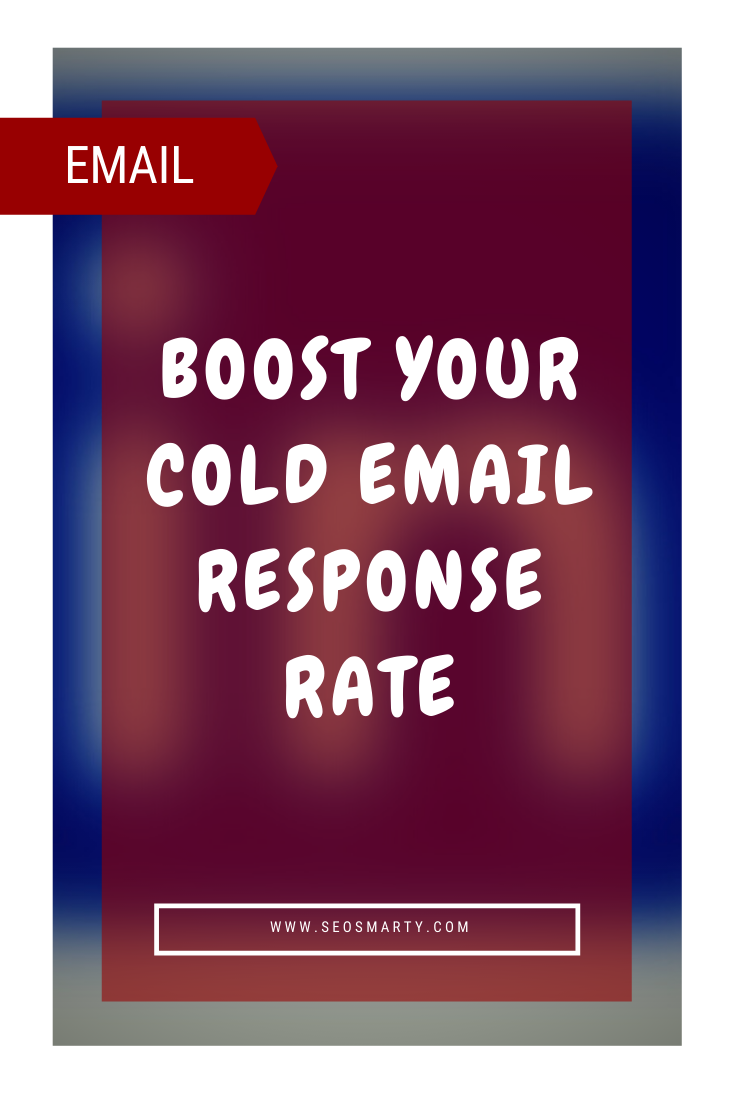
When your email response rates seem to be persistently low, it can be extremely frustrating. You keep tweaking things, but the results don’t seem to change.
There are steps you can take to boost your cold email response rate, though. With careful planning, you can make a huge difference to the success of your campaigns.
Here are twelve steps you can take to boost your cold email response rate.
Personalization Is Key
We all value our inboxes. We use them to organize our businesses, our personal lives, and everything in between.
If we’re to allow emails into our inboxes, then they have to add value.;
In a world of constant spam, we’re extremely adept at scanning through our emails and discarding the worthless ones. Unfortunately, this makes it harder for your cold outreach – even if you’re offering exceptional value.
One way to quickly showcase that you’re different from the spam and that you actually offer value is through personalization.
It’s very difficult to offer value through an email without personalization. It’s even harder to convey value without personalization.
We’re constantly on the lookout for spam and one of the first signs is that an email could have gone out to anybody. Show that you’ve put the time into understanding the prospect and that your email offers value.
Some ideas for increased personalization can range from starting the mail with the lead’s name and all the way to incorporating email signature marketing in your cold email campaign, which will help you reach a higher conversion rate of your leads.
Personalized emails drive 6x more transactions, and it’s not surprising.
Research Your Prospects to Make Your Emails More Relevant
When we talk about personalization, we’re talking about more than just putting someone’s name in the subject line and first sentence.
We’re talking about understanding the motivations of your prospects. This takes a little bit of extra effort, but it pays off:
- Spend time on your prospect list and ensure your prospects’ goals are closely aligned to what you’re offering.
- Find out what they’re talking about/sharing and show that you care about the same things by referencing them in the email.
- Research prospects on social media (outreach software like Mailshake offers LinkedIn plugins to make this easier) and use a tool like Voila Norbert to find specific emails for people in that organization.

Use Voilanorbert to find contact details of just about anyone
Information is a way to create a connection. It takes more work, but it will make your cold outreach much more effective.
Make Your Subject Lines Stand Out
Before you can even dream of getting a response, you need to get your email noticed in a crowded inbox.
It’s estimated that the average worker sends and receives 121 business emails each day. If we take that number, then your subject line has to compete with 120 other subject lines.
This is a split-second opportunity to pique someone’s interest that you can’t afford to miss.
It’s a tricky balance because you need to grab someone’s attention while staying on point and conveying value. 47% of recipients decide whether or not to open emails based on the subject alone, so this goes to show the importance of choosing the right words.
Make sure you’re dedicating plenty of energy to creating subject lines that stand out.
Respect the Prospect’s Time
People lead busy lives. Whether they’re at work or at leisure, they don’t want to be wasting their time reading long emails with no guarantee of value.
Your emails have to respect your prospect’s time by getting to the point.
It’s natural to want to try and fit as much information in about your product as possible, but you should taper this. Instead, focus on using your creativity to create concise, value-packed emails that grab your audience’s attention.
Don’t forget about the presentation either – break up the paragraphs to make them easy to read and make sure it looks like something that’s going to be a quick read.
Focus on the Prospect’s Needs – You’re not the Focus
You’re a great company with a great product – it’s easy to start waxing lyrical about your business to try and impress your prospect.
You have to remember that the prospect never asked for your email, though. They’ve shown no interest in your business, but they do have an interest in their own success.
This means you have to put your interests on the backburner and showcase how you can address the prospect’s needs. Your cold emails aren’t about making a sale there and then; they’re about starting a conversation, so how can you achieve this?
Use a Proven Sales Pitch
Cold pitching is nothing new, and the psychology of sales applies to cold emails just as it does any other sales interaction.
People have been selling things for a long time now, and they’ve found there are certain things that work and others that don’t. A lot of the hard work has been done for you, and there are some tried and tested sales pitches you can incorporate into your cold emails.
Yes, you will adapt them, but the principles of selling remain the same, and these sales pitches work.
Often, you don’t have to reinvent the wheel. You just have to find a way to make it work for your specific needs.
Perfect Your Copy
You can have a great strategy for getting more responses but if you can’t accurately convey your messages, then they’re not going to work. Just like with your subject lines, there’s a tough balancing act to achieve.
You should:
- Convey value
- Be concise
- Infuse character
- Engage your audience
This is why it pays to take your time over your emails. Think about your language and how it might be received by your prospects. Changing a few words in your copy can make a difference to your response rate, so make sure to A/B test as you go.
Your subject lines may grab your prospects’ attention, but your copy needs to hold it. Don’t be shy of running a few iterations with your copywriter or copywriting service.
Discover Your Brand Voice
Don’t be afraid to show your character in your email!
One thing you notice with spam is how bland it is – there’s no character in it, no brand voice. This fits the theme of a general lack of personalization. Poor cold emails give you nothing to be excited about and nothing to identify with.
Character grabs people’s attention and makes you stand out from all the other emails.
Your business has its own unique identity and story, so make sure you infuse this into your emails. Develop your brand voice and make it tell your story.
Character is an important part of any marketing. Just because emails are short shouldn’t mean they’re any less characterful. Use your brand voice to get people to interact with your cold emails.
Incorporate Multimedia
Multimedia is great for grabbing people’s attention and efficiently conveying complex messages. Viewers retain 95% of the message when watching a video versus 10% when reading text.
In a cold email, you want to get your key points across quickly, so this makes video ideal.
The big thing to remember is you have to keep an eye on deliverability. Email providers have complex algorithms to detect spam, and multimedia will play into this. If you’re working with a good sales engagement platform, then they will help you manage your deliverability, but it’s important you’re not overloading your emails.
Optimize Your Calls to Action
It’s amazing the impact a good call to action can have. Emails with a single call-to-action have been found to increase clicks by 371% and sales by 1617%.
When you’re writing your copy it’s always obvious to you what action you want people to take. For the reader, it’s not always so obvious. If you want people to take action, then you have to lead them towards it, and that’s exactly what your CTAs do.
For instance, if you host webinars, you can drive people to a landing page where they can sign up to attend the webinar itself and then, depending on what webinar platform you use, you can use the platform to send them notifications and use calls to action in the webinar to drive them into your sales funnel.
Your CTAs help tie everything together and show the prospect what you want them to do next. Any old CTA won’t do; they need to be optimized, so make sure you’re A/B testing.
Build Out Your Sequences
People don’t always respond to your email the first time around – this doesn’t mean you should give up.
There are lots of reasons why people might not respond to you after the first email but will respond to subsequent ones. How often do we forget to respond to an important email in our personal lives? Well, responding to your email might be of secondary importance to someone and sometimes it slips through the cracks.
This means it’s important to be persistent.
If you’re offering value, then there’s nothing wrong with sending more emails and creating a sequence. The key is respecting your prospects’ privacy and knowing when enough is enough.
Automation and Testing
Checking off every detail in this list is no easy task. There’s a lot of work involved, and when you’re running big campaigns you want to automate as much as possible.
This is where software like Mailshake is worth its weight in gold.
When you’re creating campaigns, you want everything to be in one place, and make your life as simple as possible. With built-in sequences, A/B testings, social media plugins, automated responses, and powerful personalization tools, that’s exactly what Mailshake offers.
Detailed statistics help you maximize deliverability, get your emails opened, and push up your response rates.
With the right software, ticking off all the tips on this list becomes much easier.
Final Thoughts
A good response rate is vital if you’re going to see a good return on investment from your cold email campaigns. Luckily, there are lots of little steps you can take to achieve this.
The difficulty with cold emails is that they’re used so poorly by so many. This makes it even more difficult for the people that are doing it well.
What you need to do is take care of the small details and think about the recipient first. If you can demonstrate you offer value at every step of the interaction, then it’s going to give you a much better chance.
With a few tweaks, you can give your email response rates a big boost.
Author: Sujan Patel
Sujan Patel is a partner at Ramp Ventures & co-founder of Mailshake. He has over 15 years of marketing experience and has led the digital marketing strategy for companies like Salesforce, Mint, Intuit and many other Fortune 500 caliber companies.
EMAIL MARKETING
Unveiling the Future of Email Marketing: 4 Trends to Revolutionize Engagement
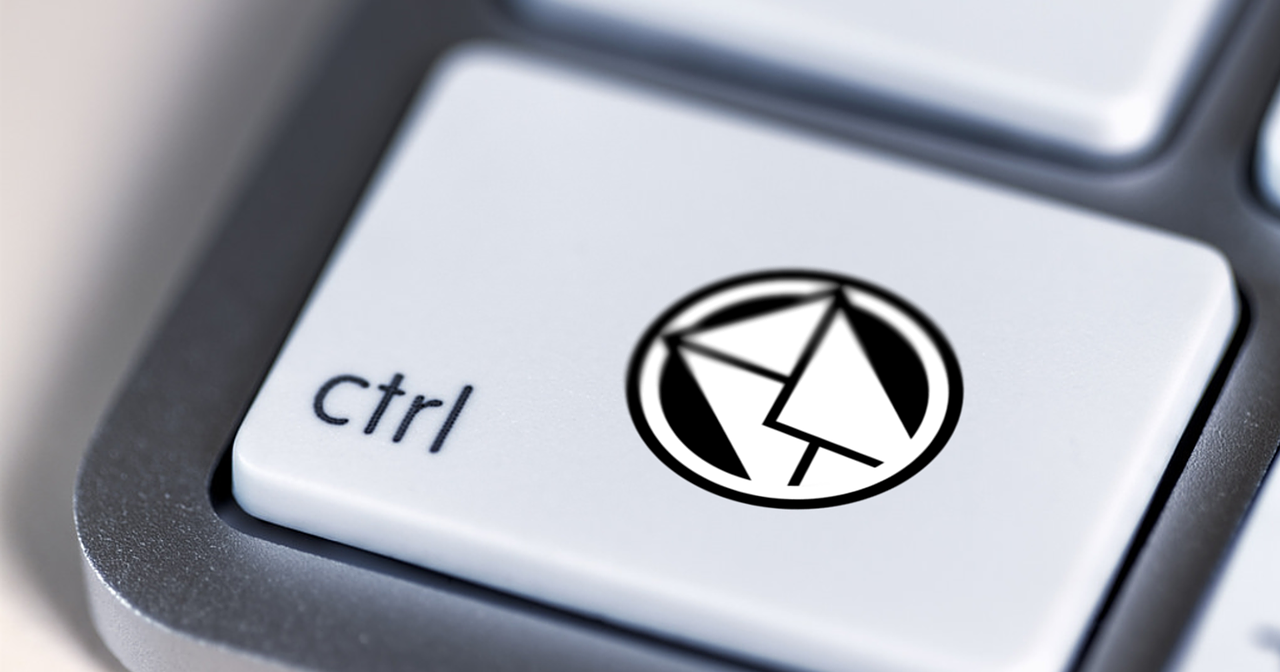
In today’s fast-paced digital landscape, the efficacy of email marketing hinges not only on the delivery of messages but also on their ability to resonate with audiences and drive meaningful interactions. Gone are the days of generic blasts; instead, companies are increasingly turning to innovative strategies to captivate their subscribers. Here, we delve into four emerging trends poised to redefine the realm of email marketing, promising to elevate engagement and drive conversions.
1. User-Generated Content (UGC) Takes Center Stage
User-generated content (UGC) emerges as a potent tool in the arsenal of email marketers, facilitating authentic connections with audiences while amplifying brand visibility. From customer reviews to social media posts, UGC offers a dynamic and relatable portrayal of products and services, resonating with consumers in the era of “new sincerity.”
By harnessing UGC within newsletters, brands gain invaluable insights into consumer preferences and behaviors, fostering trust and credibility. Strategies such as incentivized contests or social media challenges empower users to contribute content willingly, fueling a steady stream of authentic engagement.
2. Augmented and Virtual Realities (AR/VR) Transform Experiences
Augmented reality (AR) and virtual reality (VR) technologies emerge as game-changers in the realm of email marketing, offering immersive experiences that captivate and compel audiences. While VR may require substantial investments and specialized equipment, AR presents a more accessible avenue for brands to showcase products and drive engagement.
From interactive product demonstrations to virtual try-on experiences, AR/VR initiatives promise to revolutionize email campaigns, offering users a glimpse into a digitally enhanced world. While technical constraints may limit current implementations, ongoing advancements herald a future where AR/VR seamlessly integrate into email communication, enriching brand experiences.
3. Omnichannel Integration Enhances Connectivity
The advent of omnichannel marketing heralds a new era of seamless connectivity, enabling brands to orchestrate cohesive experiences across diverse touchpoints. By unifying customer interactions across websites, offline stores, and email communications, businesses cultivate deeper insights and deliver personalized content tailored to individual preferences.
Omnichannel integration not only streamlines the customer journey but also fosters brand loyalty by offering consistent and personalized experiences. Whether browsing online, engaging in-store, or interacting via email, customers encounter a unified brand identity, enhancing engagement and driving conversions.
4. Hyper-Segmentation and Personalization Drive Relevance
In an age defined by personalized experiences, hyper-segmentation emerges as a cornerstone of effective email marketing strategies. By dissecting audiences into granular segments based on demographics, behaviors, and preferences, brands can deliver tailored content that resonates on a profound level.
Utilizing advanced email marketing platforms, businesses can leverage hyper-segmentation to craft personalized campaigns that speak directly to individual interests and needs. From dynamic product recommendations to targeted promotions, personalized emails foster a sense of relevance and exclusivity, driving engagement and fostering long-term customer relationships.
In conclusion, the future of email marketing lies in innovation and adaptation, with brands leveraging cutting-edge technologies and strategic approaches to engage audiences effectively. By embracing trends such as user-generated content, augmented reality, omnichannel integration, and hyper-segmentation, businesses can unlock new realms of engagement, driving meaningful interactions and fostering brand loyalty in an ever-evolving digital landscape.
EMAIL MARKETING
Top Email Marketing Strategies To Use For Q4
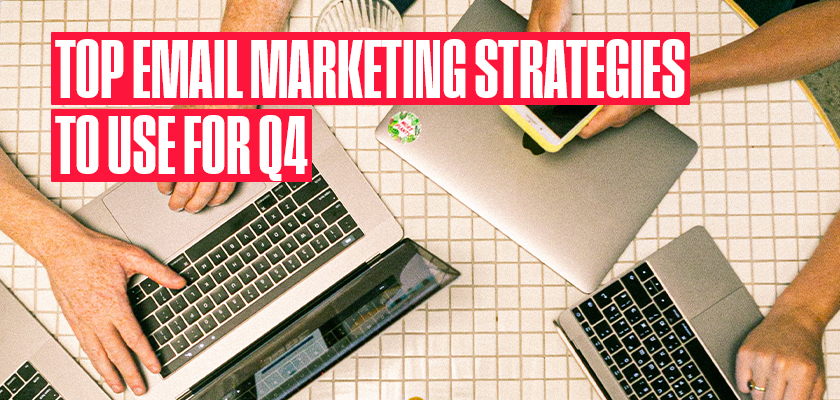
As we approach the Q4 period, it’s never too early to start preparing for your Black Friday and Cyber Monday email marketing strategy. Once Black Friday week hits, our inboxes are filled with a hurricane of brands fighting for attention, each with the ‘biggest’ and the ‘best’ offers you won’t get anywhere else.
To set your brand apart from the competition, it’s crucial to plan ahead. Over 60% of brands send out multiple emails over the course of the Black Friday/ Cyber Monday weekend, and it’s a perfect time to up your brand awareness ahead of the Christmas shopping season.
If you’re not sure where to start with Q4 planning or need some last-minute tips to enhance your strategy, we’ve outlined some top email marketing strategies to incorporate into your plans!
1. Send Pre-Black Friday Emails
Sending pre-Black Friday emails is great for keeping your brand at the forefront of people’s minds ahead of the big day. Not only will a pre-Black Friday email let your audience know about your upcoming event, but it will also ensure that your audience is regularly checking in on your brand throughout the Q4 period.
Additionally, sending pre-Black Friday emails is beneficial for A/B testing. Sending out different formats of emails with minor tweaks, such as the CTAs or subject lines, can help you determine what your audience is more likely to engage with so you can then tailor your Black Friday strategy accordingly.
2. Run a Lead Gen
It might seem like a given, but ahead of Black Friday, it’s beneficial to give your email list a much-needed boost. A simple but effective way to do this is to run a lead-generation advertising campaign. For example, offering your audience the chance to win a prize in return for submitting details, such as their email address, is a quick and easy way to increase your list size. Similarly, refreshing your pop-up on-site with an irresistible offer will also contribute to gaining new profiles.
3. Offer Something Unexpected
Email marketers only have 3 seconds to capture the attention of their readers, which isn’t surprising due to the amount of emails the average person will receive daily. If an email isn’t driving you to click on it, it swiftly gets forgotten about and lost within their inbox. Over Black Friday, to avoid this happening, make sure you’re offering something unexpected, whether that’s a mystery discount or a gift with each purchase!
One of the worst things you can do over Black Friday is to overcomplicate your promotions. If you’re offering multiple promotions and codes, things can get a bit too hectic. To make it as simple as possible, consider running a standard “up to” percentage amount. If you want to include a code, it helps to have this auto-applied at checkout to avoid customers dropping off if they input it incorrectly. In the design of your email, make sure the promotion is clearly highlighted within the design so it can’t be missed, and also referenced in the body copy and subject lines too!
5. Create An Effective Design
Creating an effective design is one thing, but how do you know what works? To improve your email campaigns, consider running an A/B test to pinpoint which elements of your design are improving the CTR and which are hindering it.
Highlighting metrics such as colour, font size, and CTAs can instantly impact whether people will click through or discard! If a consumer clicks on your email, you’ll have, on average, 11 seconds to keep their attention, so making sure your design stands out for the wave of other Black Friday content is key! Keep the design of your email reflective of your branding but with stand-out elements specifically for the shopping season.
6. Make Use Of CTAs
CTAs (call-to-action) are one of the most underrated parts of any email campaign, especially over the Black Friday period. They’re one of the driving forces behind making your email recipients turn into passive readers to customers. One key way to make your CTAs stand out is to make use of bright and bold colours that will attract and hold attention. Additionally, it’s important to think about the placement of your CTAs to increase your click-through rate, make sure the copy used is clear and concise (between two and five words) and use actionable language.
7. Focus On Subject Lines
Subject lines are make or break for every email campaign. Over Black Friday, consumers’ inboxes are cluttered with emails, so it’s important to stand out. It’s estimated that on Black Friday, 116.5 million emails from brands were sent out (more than any other day), and Black Friday sees the highest number of emails opened and clicked. To prevent your emails from being lost in the void, having a cracking subject line to stand out from competitors is everything.
The secret to a great subject line is to keep it short and snappy. On average, subject lines with 50 characters or less tend to get an average of 12% higher open rates and 75% higher click-through rates. Including emojis within subject lines has been seen to increase click-through-rates by as much as 28%!
Additionally, it helps to use language that will really pique your audience’s interest, stay away from any overused cliches and keep them as attention-grabbing as possible.
8. Prep for Cyber Monday
To plan an effective Black Friday, it’s crucial to prepare for Cyber events too. With Cyber following straight after, it’s easy to forget about it or not prioritise it as much as Black Friday, however, it’s still an extremely profitable day! To make the most of it, create dedicated campaigns and tailor your online sales messaging so that it focuses on driving urgency.
9. Incorporate SMS into Your Strategy
Sometimes the importance of SMS can be overlooked because a lot of brands assume that text messages won’t fit in with their brand. However, it’s a no-brainer for reaching even more customers. On average, 82% of people engage with marketing content on their smartphones, so it’s something to definitely explore, especially over the busy shopping period.
To gain SMS sign-ups, you can effectively tie your SMS campaign in with your lead generation and ask for customers to fill out their phone number as well as their email address. That way, they’ll be opted into your send list. It can also be used to send reminders when sales have launched or when offers are coming to a close.
Despite having only 160 characters to work with, SMS campaigns are longer than recommended email subject lines, so it can be just as, if not more effective than email marketing campaigns.
EMAIL MARKETING
Mastering Email A/B Testing for Mobile Apps: The Ultimate Guide
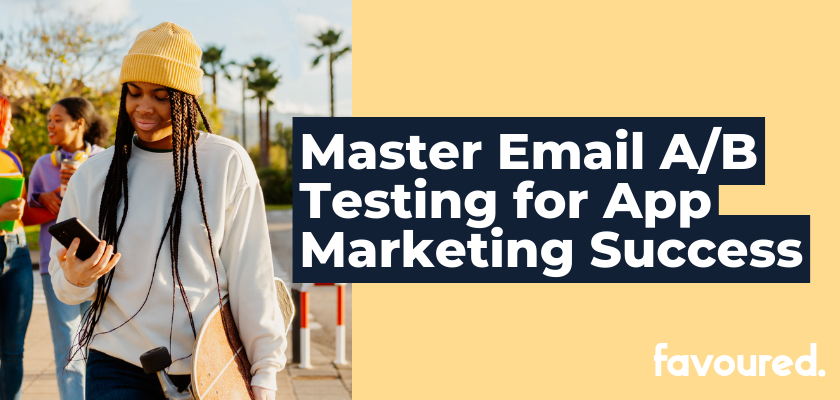
Welcome to the world of email A/B testing for mobile apps!
Here at Favoured, we’re all about delivering the best results for our clients, and that includes mastering the art of email marketing. In this guide, we’ll take you through the essentials of A/B testing your email campaigns to achieve maximum success for your mobile app.
What Is Email A/B Testing?
Email A/B testing, also known as split testing, is a method used to compare two or more variations of an email campaign to determine which one performs better. The goal is to identify the version that resonates most with your target audience, ultimately leading to higher open rates, click-through rates, and overall engagement.
In the context of mobile apps, email A/B testing can be particularly valuable, as it helps you fine-tune your marketing messages to drive user acquisition, engagement, and retention.
Benefits Of Email A/B Testing
There are numerous advantages to incorporating A/B testing into your email marketing strategy for mobile apps. Some of the key benefits include:
- Improved open rates: By testing different subject lines, you can identify which ones capture your audience’s attention and entice them to open your emails.
- Increased click-through rates: Experimenting with various email elements, such as CTAs and layout, can help you determine the most effective ways to encourage recipients to take action.
- Enhanced engagement: A/B testing allows you to create more relevant and engaging content for your target audience, resulting in higher conversion rates and stronger user relationships.
- Data-driven decision making: With A/B testing, you can make informed decisions based on actual user behaviour, rather than relying on assumptions or gut feelings.
Key Metrics To Track
When conducting email A/B tests, it’s essential to track specific metrics to gauge the success of your campaigns. Some of the most critical metrics to monitor include:
- Open rate: The percentage of recipients who open your email. This metric can help you evaluate the effectiveness of your subject lines.
- Click-through rate (CTR): The percentage of recipients who click on a link within your email. A high CTR can indicate that your email content is engaging and relevant.
- Conversion rate: The percentage of recipients who take the desired action after clicking a link in your email, such as downloading your app, making a purchase, or signing up for a newsletter.
- Unsubscribe rate: The percentage of recipients who opt out of receiving future emails from you. A high unsubscribe rate may suggest that your email content is not resonating with your audience.
Understanding the basics of email A/B testing is the first step towards optimising your mobile app marketing campaigns. By grasping the concept, benefits, and key metrics of A/B testing, you’ll be well-equipped to make data-driven decisions that drive real results for your mobile app.
Setting Up Your Test
Defining Your Goal
Before you start setting up your A/B test, it’s crucial to determine the primary objective of your test. Having a clear goal will help you focus your efforts and make data-driven decisions based on the results. Your goal should align with your overall mobile app marketing strategy and be specific, measurable, attainable, relevant, and time-bound (SMART). Examples of goals for email A/B tests include:
- Increasing the open rate by 10% within 30 days
- Boosting the click-through rate by 15% within 60 days
- Reducing the unsubscribe rate by 5% within 45 days
Selecting Variables To Test
Once you’ve set your goal, it’s time to choose the variables to test in your email campaign. The variables you select should have a direct impact on your goal and be something you can measure. Here are some common email elements to consider testing:
- Subject lines: Test different wording, phrasing, or personalisation techniques to capture your audience’s attention.
- Email content: Experiment with different content styles, lengths, or structures to see what resonates with your recipients.
- Call-to-action (CTA): Try various CTA placements, wording, or button designs to encourage users to take the desired action.
- Images and visuals: Test different images, colours, or visual layouts to determine which one drives higher engagement.
- Personalisation: Compare personalised content, such as using the recipient’s name, to generic content to assess its impact on your metrics.
Creating Variations
Now that you’ve chosen your variables, it’s time to create the variations for your email campaigns. Keep the following tips in mind when crafting your variations:
- Limit the number of variations: While it may be tempting to test multiple variations, it’s best to limit yourself to two or three, so you don’t dilute your results or prolong the testing process.
- Make distinct changes: Ensure the variations are different enough to provide meaningful insights. For instance, if testing subject lines, one could be a question, while the other could be a statement.
- Keep other elements consistent: To ensure accurate results, only change the variable you’re testing and keep all other elements the same across variations.
- Consider your audience: When creating variations, take into account your target audience’s preferences and behaviours to craft relevant and engaging content.
Setting up an A/B test for your mobile app’s email campaigns is an essential step towards optimising your marketing efforts. By defining your goal, selecting the right variables to test, and creating effective variations, you’ll be well on your way to enhancing your app’s performance and building stronger relationships with your users.
Implementing & Analysing Your Test
Test Duration & Sample Size
Determining the optimal test duration and sample size is crucial for obtaining accurate and reliable results. Here are some factors to consider when deciding on these parameters:
- Test duration: The length of your test should be long enough to gather sufficient data, but not so long that it delays your marketing efforts. Generally, a test duration of 7 to 14 days is recommended for most email A/B tests.
- Sample size: Your sample size should be large enough to provide statistically significant results. Use an A/B test sample size calculator to determine the appropriate size based on your desired confidence level and the expected difference between variations.
Keep in mind that these recommendations may vary depending on your specific circumstances, such as the size of your email list or the frequency of your email campaigns.
Launching Your Test
Once you’ve determined the test duration and sample size, it’s time to launch your A/B test. Follow these steps to ensure a smooth test launch:
- Segment your email list: Divide your email list into random, equal-sized groups to ensure a fair comparison between variations.
- Send your variations: Schedule your email campaign to send the different variations to the corresponding segments of your email list.
- Monitor the progress: Keep an eye on the key metrics, such as open rates, click-through rates, and conversion rates, throughout the test duration to ensure everything is running smoothly.
Analysing Results & Drawing Conclusions
After your test has concluded, it’s essential to analyse the data, draw conclusions, and apply your findings to future email campaigns. Here’s how to go about it:
- Review the data: Examine the key metrics for each variation and compare them to determine which one performed better.
- Check for statistical significance: Use an A/B test calculator to ensure the differences between the variations are statistically significant, indicating that the results are not due to random chance.
- Draw conclusions: Based on the data, determine what you’ve learned from the test and how it can inform your future email marketing efforts. For instance, if a specific subject line format led to higher open rates, consider using a similar approach in future campaigns.
- Apply your findings: Incorporate your learnings into your email marketing strategy to continually optimise your campaigns and drive better results for your mobile app.
Implementing and analysing your email A/B tests is a critical step towards optimising your mobile app marketing campaigns. By determining the appropriate test duration and sample size, launching your test, and analysing the results, you’ll be able to make data-driven decisions that enhance your app’s performance and foster stronger relationships with your users.
Best Practices
Consistent Testing
To achieve long-term success in email marketing for mobile apps, it’s crucial to make A/B testing a consistent part of your strategy. Regular testing allows you to:
- Continuously optimise your campaigns: Stay ahead of the curve by continually refining your email campaigns based on data-driven insights.
- Adapt to changing trends: Keep your email marketing efforts relevant and up-to-date by adapting to evolving user preferences, industry trends, and market dynamics.
- Validate new ideas: Use A/B testing to validate new marketing concepts or tactics before fully implementing them in your campaigns.
Avoiding Common Pitfalls
As with any marketing endeavour, there are potential pitfalls to watch out for when conducting email A/B tests. Here are some common mistakes and how to avoid them:
- Testing too many variables at once: Focus on testing one variable at a time to ensure accurate results and avoid confusion when analysing the data.
- Ignoring statistical significance: Make sure your test results are statistically significant to avoid drawing conclusions based on random chance or insufficient data.
- Focusing solely on short-term gains: While it’s essential to optimise for immediate results, also consider the long-term impact of your email marketing strategy on user retention and lifetime value.
Utilising Automation & Growth Hacking Strategies
Leveraging automation and growth hacking techniques can help streamline your email A/B testing efforts and drive even better results for your mobile app. Consider the following strategies:
- Email automation: Use email marketing automation tools to schedule and send your A/B tests, track key metrics, and segment your email list efficiently.
- Dynamic content: Implement dynamic content in your email campaigns to personalise messages based on user behaviour, preferences, or demographics, and A/B test the effectiveness of various personalisation techniques.
- Multivariate testing: Once you’re comfortable with A/B testing, consider using multivariate testing to assess the impact of multiple variables simultaneously and identify the best combination of elements for your campaigns.
Mastering email A/B testing for your mobile app is an ongoing process that requires consistent effort, learning, and adaptation. By following best practices, avoiding common pitfalls, and utilising automation and growth hacking strategies, you’ll be well on your way to achieving long-term success in your email marketing campaigns.
As a data-driven full-funnel marketing agency, Favoured believes in the power of optimising every aspect of the customer journey, and that includes email marketing.
We’re dedicated to helping businesses drive real results, and A/B testing plays a crucial role in this process. Reach out if you want to supercharge your email campaigns with us. Happy testing!
-

 PPC5 days ago
PPC5 days ago19 Best SEO Tools in 2024 (For Every Use Case)
-
SEARCHENGINES7 days ago
Daily Search Forum Recap: April 17, 2024
-
SEARCHENGINES6 days ago
Daily Search Forum Recap: April 18, 2024
-
SEARCHENGINES5 days ago
Daily Search Forum Recap: April 19, 2024
-

 MARKETING6 days ago
MARKETING6 days agoEcommerce evolution: Blurring the lines between B2B and B2C
-

 SEO6 days ago
SEO6 days ago2024 WordPress Vulnerability Report Shows Errors Sites Keep Making
-

 WORDPRESS5 days ago
WORDPRESS5 days agoHow to Make $5000 of Passive Income Every Month in WordPress
-

 WORDPRESS6 days ago
WORDPRESS6 days ago10 Amazing WordPress Design Resouces – WordPress.com News










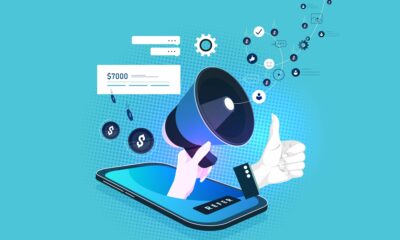




You must be logged in to post a comment Login